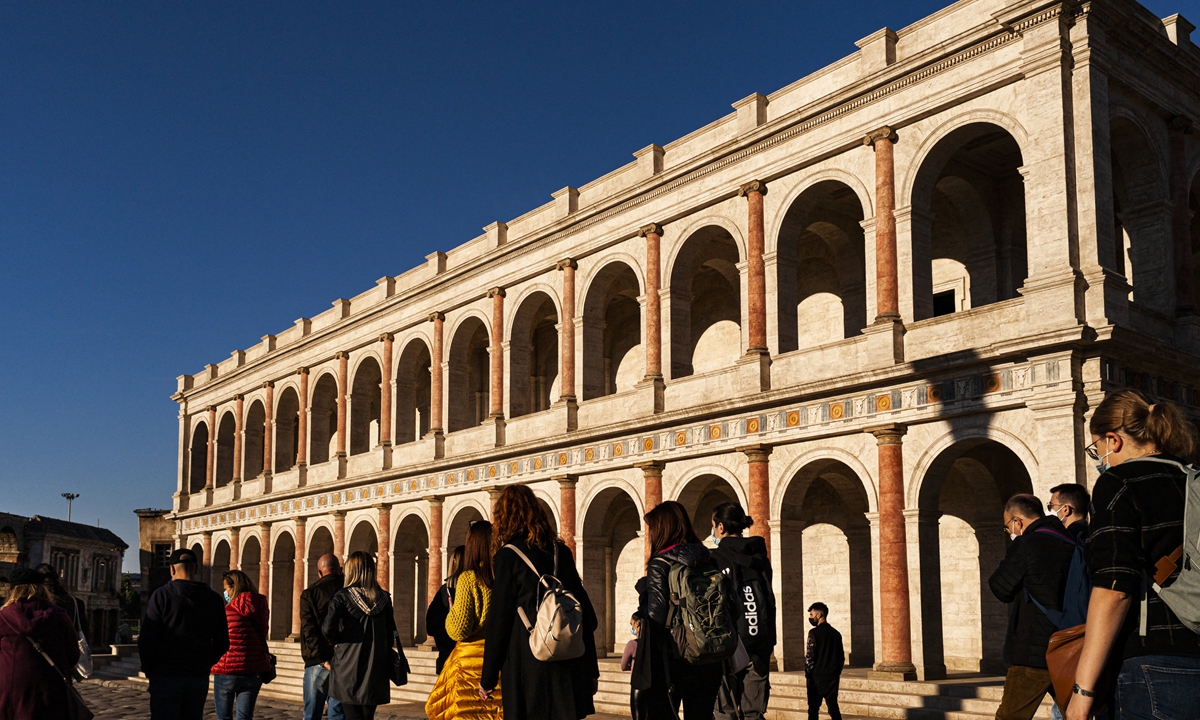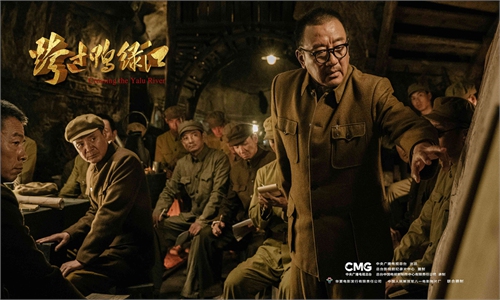ARTS / FILM
Rome’s legendary Cinecitta studios eye new golden age
City of cinema

Visitors walk across the permanent set of Ancient Rome on November 19, 2021 during a guided tour on a back lot of the Cinecitta film studios in Rome. Photo: AFP
Once the stomping ground of Italy's greatest directors and actors, from Federico Fellini to Sophia Loren, Rome's renowned Cinecitta film studios are planning a much-needed makeover for a new era.Dubbed the "Hollywood on the Tiber," Cinecitta was at the heart of the golden age of Italian cinema and now hopes to regain some of its former luster thanks to European Union post-pandemic funding.
Italy is the main beneficiary of the bloc's recovery fund and the aging studios are in line for a 260 million euro ($292 million) windfall to expand and modernize to capitalize on the different ways of now watching film and TV.
"We can give back to this place the light that has always characterized it, and that it deserves," Cinecitta CEO Nicola Maccanico told AFP, hopefully.
Cinecitta - which means "the city of cinema" in Italian - has been the backdrop of more than 3,000 films, including 51 Oscar winners.
In recent decades, although critically acclaimed films such as Bernardo Bertolucci's 1987 The Last Emperor and Anthony Minghella's The English Patient in 1996 were shot at Cinecitta, major productions have become more scarce.
The studios were inaugurated on the southern outskirts of the Italian capital in 1937 to churn out propaganda for the Fascist government of Benito Mussolini.
And they have since endured the upheavals of Italy's modern history: the Allied bombings in 1944, the repurposing of the studios as housing for people displaced by war, the economic "miracle" of the 1950s-60s and the subsequent decline.
In its heyday during the golden era of film, major Hollywood blockbusters such as Ben-Hur in 1959 and some of world cinema's most seminal works like Fellini's 1960 La Dolce Vita were filmed at Cinecitta.
But since the end of the 1960s, it has been unable to recapture its former prestige, due to competition from television and major international productions opting for better-equipped studios elsewhere.
'Unique opportunity'
The studios' current inability to meet potential demand from TV series and films due to the too-small size of its stages and other deficiencies costs Cinecitta about 25 million euros per year, according to business daily Il Sole 24 Ore.
"For Cinecitta, this is really a unique opportunity because it brings together two situations that are difficult to reproduce: the recovery plan and a booming market," Maccanico said.
The lion's share of the money would help double the surface area of the studios, which currently cover about 40 hectares, with the creation of five new sets and the renovation and expansion of five others.
Further improvements would include an indoor pool for underwater filming, a theater with a 360-degree green screen and two sets for virtual reality with LED panels.
Maccanico said that the increased number of platforms for content today had created unprecedented opportunity for film studios.
"It's within this market context that the idea of relaunching Cinecitta was born... making it a new reference hub for the new European audiovisual production market," he said.
To boost its income, Cinecitta has held tours for the public since 2011.
Italy in 2019 - before COVID-19 shuttered productions worldwide - was the European country with the highest number of domestic productions, at 312 films, ahead of France with 240 and Germany at 237, according to the European Audiovisual Observatory.


